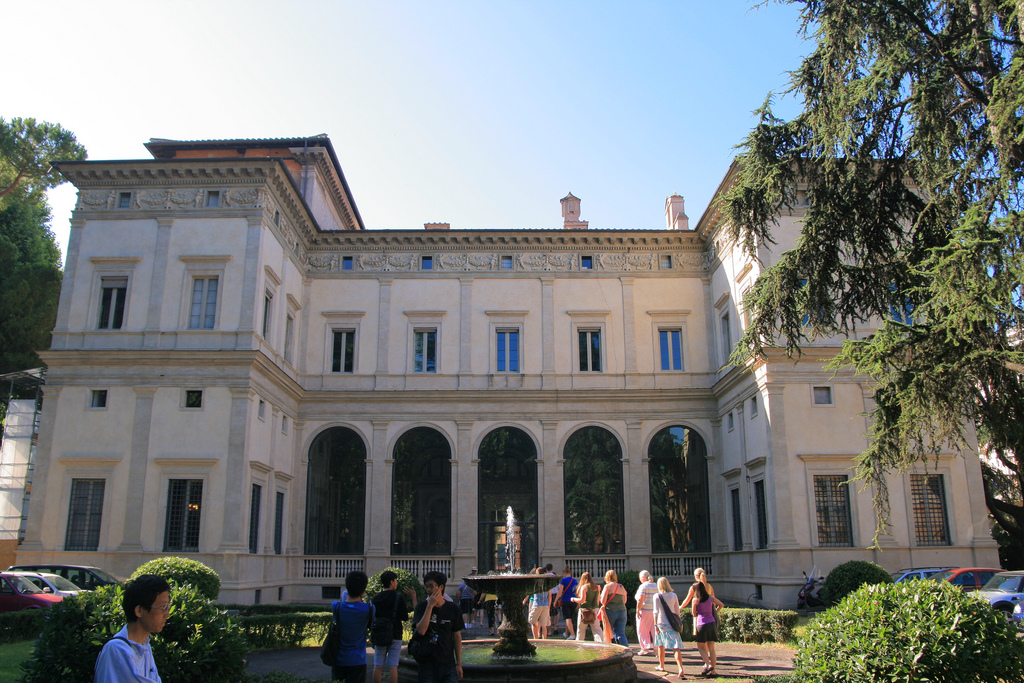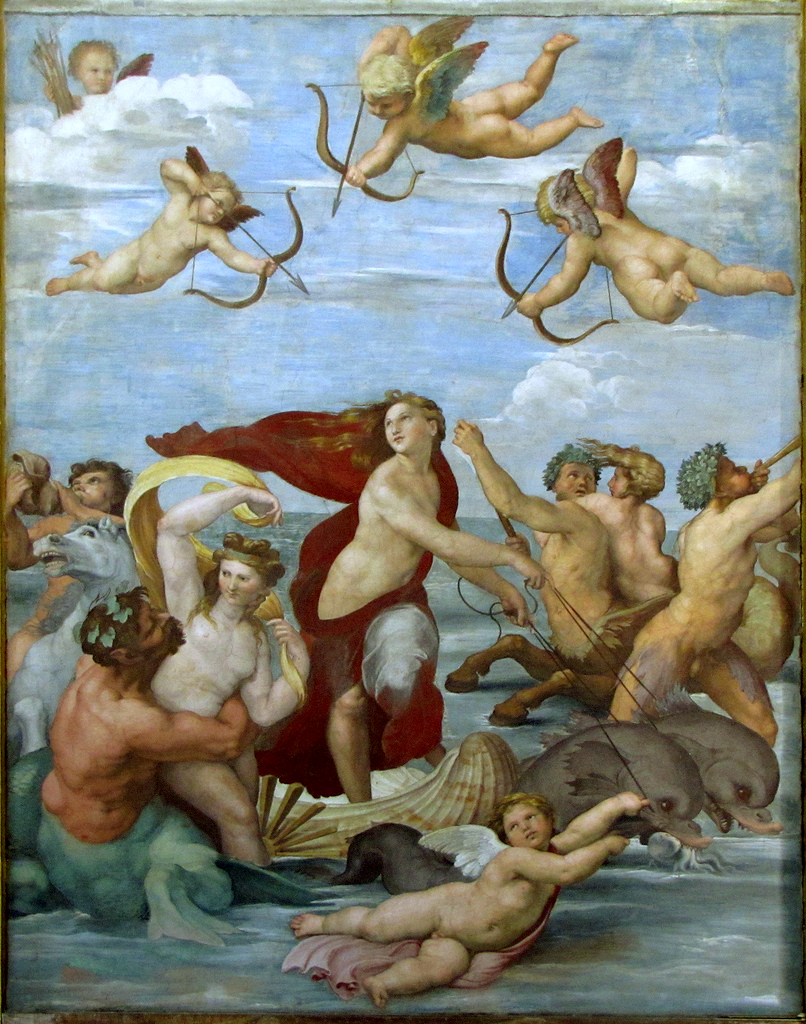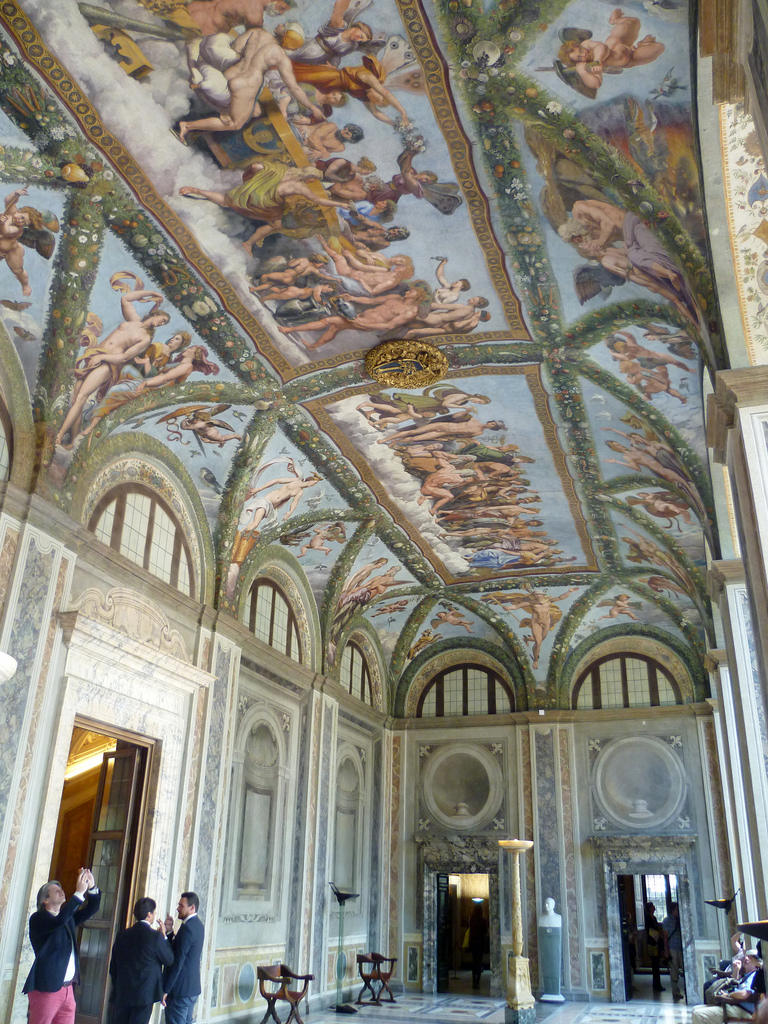Tourists visiting Rome often overlook the modest-looking Renaissance Villa Farnesina, yet for art lovers it certainly packs a punch. Central location, the evocative frescoes and uncrowded rooms, certainly, make the villa one of the best museums in Italy.
Villa Farnesina was built by a Siennese banker and the Europe’s richest man of his days, Agostino Chigi in the early 16th century. Chigi had the money and good taste to hire crème de la crème of the Renaissance talents to decorate the villa: Raphael, Baldassare Tommaso Peruzzi, Francesco Penni, Giulo Romano, Sebastian del Piombo, and Giovanni Antonio Bazzi, known as “Il Sodoma”. Together they created what is considered one of the most magnificent Renaissance treasures.

In the Loggia of Galatea you can see scenes from Ovid’s Metamorphosis by Sebastian del Piombo and the stunning Raphael’s fresco depicting Galatea on a shell-chariot surrounded by mythological sea-creatures. Although Raphael chose the theme, worked on the composition and prepared the sketches, despite constant persuasion from Chigi, he did not actually execute the fresco himself. He was too busy spending time with his newfound love, La Fornarina, a baker’s daughter who lived nearby.

Stepping into the Loggia of Cupid and Psyche is like entering an exotic garden, bright and full of flowers. The ceiling frescoes depict scenes from the beautiful myth of Psyche, so beautiful that Cupid himself could not resist falling in love with her.

Upstairs, in the Salone delle Prospettive, you can admire an early example of trompe l’oeil, three-dimensional stunning views of Roman countryside created by Baldassare Peruzzi.
One of the great things about Villa Farnesina is that you can have the opulent frescoes all to yourself, as the museum is rarely crowded. You can sit in one of the rooms immersed in the passion and vivid colors of the timeless masterpieces as long as you want without anyone obstructing the view.
Villa Farnesina is open from Monday to Saturday, 9am-1pm. Although the museum is not large, head there early if you want to explore the frescoes in detail. Tickets cost € 5.
Photos from Flickr by: Francis Wu, Steven Zucker, Charlie Dave.


